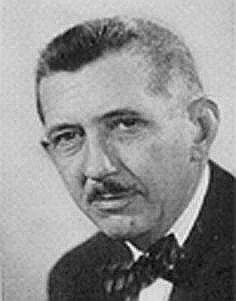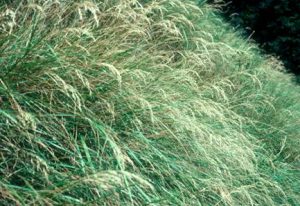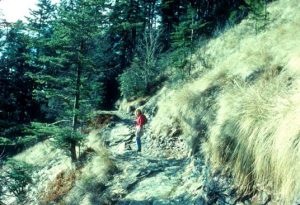(19 June 1902- 1 April 1995)
The University of North Carolina at Chapel Hill Herbarium (NCU) has about a dozen specimens collected by Stanly A. Cain. As only a fraction of our collection has been cataloged it is very possible that more will be found. Cain’s vascular specimens curated by NCU were collected in North Carolina, Tennessee and Indiana.

Other herbaria curating Cain’s specimens include Academy of Natural Sciences (PH), Austin Peay State University (APSC), Botanical Research Institute of Texas (BRIT:SMU, BRIT:VDB), Brigham Young University (BRY), Brown University (BRU), Butler University (BUT), Clemson University (CLEMS), Field Museum (F), Great Smoky Mountains National Park (GSMNP), Harvard University (GH), Highlands Biological Station (HBSH), Indiana University (IND), Utah State University (UTC), Iowa State University (ISC), Denver Botanical Garden (DBG:KHD), Louisiana State University (LSU, LSU-NO), Marshall University (MUHW), James F. Matthews Center for Biodiversity Studies (UNCC), Michigan State University (MSC), Mississippi State University (MISSA), Missouri Botanical Garden (MO), Morton Arboretum (MOR), New York Botanical Garden (NY), North Carolina State University (NCSC), The Pennsylvania State University (PAC), University of Wyoming (RM), University of Central Arkansas (UCAC), University of Colorado Museum of Natural History (COLO), University of Georgia (GA), University of Minnesota (MIN), University of Mississippi (MISS), University of Michigan (MICH), University of Notre Dame (ND), University of South Florida (USF), University of Tennessee (TENN), University of Wisconsin, Madison (WIS) , West Virginia University (WVA), and ZE Botanischer Garten und Botanisches Museum, Freie Universität Berlin (B).1,6,7
+++++
Stanley Adair Cain was born in Jefferson County, Indiana on 19 June 1902. He earned a Bachelor of Science from Butler University in 1924. He earned M.S. and Ph.D. from the University of Chicago in 1927 and 1930, respectively.2
In 1940 Cain married Louise Gilbert (d. 1993), and together they had one child, Stephen Cain.3
Cain served as an Assistant Professor at Indiana University (1931-1933) and a Research Associate at the Waterman Institute (1933-1935). 2

Photograph by Peter S. White
In 1934 A.S. Hitchcock named Calamagrostis cainii in honor of Stanley Cain. “Recently Mr. Stanley A. Cain, of the Indiana Academy of Sciences, Bloomington, Indiana, sent to me a specimen of an apparently new grass which he had collected in the mountains of eastern Tennessee. This proved to be a new species of Calamagrostis, allied to C. porteri A. Gray and C. perplexa Scribn. [The holotype is] in the U.S. National Herbarium, no. 1,611,706, collected on the shrubby summit of Mt. LeConte, Tennessee, alt. about 2000 meters, August 10, 1929, by Stanley A. Cain (no. 48). Later Mr. Cain sent specimens (no. 1016) from the same locality, with a statement that the species grew abundantly on cliffs in spruce-fir formation.”4 Calamagrostis cainii is a very rare Southern Appalachian endemic known from six populations located at the top of Mt. LeConte in the Great Smoky Mountains of Sevier County, Tennessee. In 1989-1990, Susan Wiser of the University of North Carolina at Chapel Hill discovered three additional populations in Buncombe County and Yancey County, North Carolina.5
From 1935 to 1946 Cain was first an Assistant Professor then Professor at the University of Tennessee in Knoxville. He was very productive during his time in Knoxville and in 1935 authored the influential paper, “The species-area curve” in the American Midland Naturalist 19(3): 573-581. 2

Photo by Peter S. White
Cain was at the Cranbrook Institute of Science from 1946 to 1950, then was on the faculty of the University of Michigan in Ann Arbor from 1950 to 1972. He served as the first President of The Nature Conservancy in 1950. He took leave from the University of Michigan in 1965 when President Lyndon B. Johnson appointed him Asst. Secretary of the Interior. In that capacity he oversaw the operations of the Bureau of Commercial Fisheries, the Fish & Wildlife Service, and the National Park Service. In 1972 he moved to Santa Cruz, California and served as an Adjunct Professor at University of California, Santa Cruz until his death on 1 April, 1995. 2,3
Cain received many honors among them:
1956 Botanical Society of America – Certificate of Merit
1959 Honorary Doctor of Science, University of Montreal
1965 Michigan Conservationist of the Year
1969 Ecological Society of America’s Eminent Ecologist Award
1970 elected to the National Academy of Science
PUBLICATIONS (incomplete list):
Cain, Stanley A. (1927) Airplane photography and ecological mapping. Proc. Indiana Academy of Science [complete citation needed]
— (1930) Certain floristic affinities of the trees and shrubs of the Great Smoky Mountains and vicinity. Butler University Botanical Studies 1: 129-150.
— (1930) An ecological study of the heath balds of the Great Smoky Mountains. Butler University Botanical Studies 1: 176-208.
— (1930) An ecological study of the heath balds of the Great Smoky Mountains. Ph.D. thesis, University of Chicago.
Cain, Stanley A. (1932) Concerning certain ecological concepts. Ecol. Monogr. 2: 475-508.
— (1934) Studies on virgin hardwood forest. II. A comparison of quadrat sizes in a quantitative phytosociological study of Nash’s Woods, Posey County, Indiana. Amer. Midland Nat. 15: 529-566.
— (1935) The species-area curve. American Midland Naturalist 19(3): 573-581.
— (1935) Ecological studies of the vegetation of the Great Smoky Mountains. II. The quadrat method applied to the sampling of spruce and fir forest types. Amer. Midland Nat. 16: 566-584.
— (1936) Synusiae as a basis for plant sociological field work. Amer. Midland Nat. 17: 665-672.
— (1936) The composition and structure of an oak woods, Cold Spring Harbor, Long Island, with special reference to sampling methods. Amer. Midland Nat. 17: 725-740.
Cain, Stanly A., M. Nelson and W. McLean (1937) Andropogonetum Hempsteadi: A Long Island grassland vegetation type. Amer. Midland Nat. 18: 334-350.
Cain, Stanly A. (1938) The species-area curve. Amer. Midland Nat. 19: 573-581.
Cain, Stanley A. (1939) The climax and its complexities. Amer. Midland Nat. 21: 146-181.
— (1939) Pollen analysis as a paleo-eocological research method. Botanical Review 5: 627-654.
— (1944) Foundations of Plant Geography. Harper & Brothers, New York, New York, USA.
— (1947) Characteristics of natural areas and factors in their development. Ecol. Monogr. 17: 185-200.
— (1950) Life forms and phytoclimates. Botanical Review 16: 1-32.
Cain, Stanley A. and G.M. de Oliveira Castro (1959) Manual of Vegetation Analysis. Harper & Brothers, New York, New York, USA.
— (1990) Some research needs of the National Park Service. The Conservation Foundation. George Wright Forum 7: 35-38.
SOURCES:
1. Harvard Herbaria Index to Botanists accessed 29 October 2012. http://kiki.huh.harvard.edu/databases/botanist_search.php?mode=details&id=34518
2. http://people.wku.edu/charles.smith/chronob/CAIN1902.htm
3. Evans, Francis C. (1996) Stanley Adair Cain, 1902-1995. Bull. Ecol. Soc. Of America 77(2): 80-81.
4. Hitchcock, A.S. (1934) Two new grasses, one from Tennessee, one from Argentina. J. of the Washington Academy of Sciences 24: 480-481.
5. Wiser, Susan K. (1991) Two North Carolina locations for Calamagrostis cainii Hitchc., previously considered endemic to Mt. LeConte, Tennessee. Castanea 56(2): 147-149.
6. SERNEC Data Portal. 2023. http//:sernecportal.org/index.php. Accessed on February 04.
7. Index Herbariorum. https://sweetgum.nybg.org/science/ih/. Accessed on February 4, 2023.